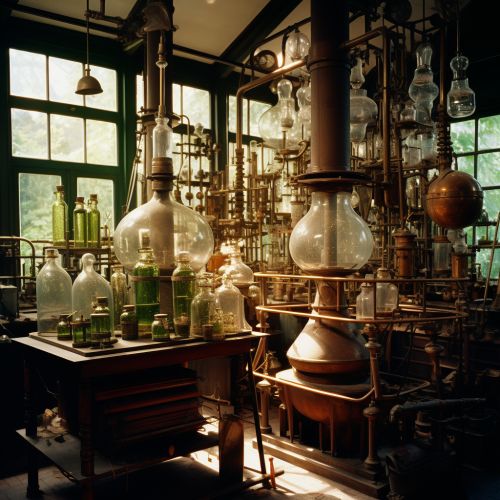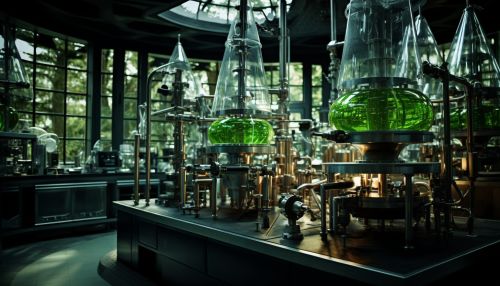Catalysis in Green Chemistry
Introduction
Catalysis in green chemistry is a critical field that focuses on the development and application of catalysts to facilitate environmentally friendly chemical reactions. The goal of this field is to reduce the environmental impact of chemical processes by minimizing waste, reducing energy consumption, and avoiding the use of hazardous substances.


Principles of Green Chemistry
Green chemistry, also known as sustainable chemistry, is guided by twelve principles that serve as a framework for researchers and practitioners. These principles are designed to reduce the environmental and health impacts of chemical processes. One of the key principles is the use of catalytic reagents (as selective as possible) to minimize waste and avoid the use of stoichiometric reagents.
Catalysis in Green Chemistry
Catalysis plays a pivotal role in green chemistry by enhancing the efficiency of chemical reactions, thereby reducing the amount of waste produced and energy consumed. Catalysts work by lowering the activation energy of a reaction, allowing it to proceed at a faster rate or under milder conditions.
Types of Catalysts
There are several types of catalysts used in green chemistry, each with its unique characteristics and applications. These include homogeneous catalysts, heterogeneous catalysts, and biocatalysts.
Homogeneous Catalysts
Homogeneous catalysts are those that exist in the same phase as the reactants. They are often used in liquid-phase reactions and can offer high selectivity and reactivity. However, their separation from the reaction mixture can be challenging, which may limit their use in green chemistry.
Heterogeneous Catalysts
Heterogeneous catalysts are those that exist in a different phase than the reactants. They are typically solid and used in gas or liquid-phase reactions. These catalysts are easy to separate from the reaction mixture, making them more sustainable. However, they may offer lower selectivity compared to homogeneous catalysts.
Biocatalysts
Biocatalysts, such as enzymes and whole cells, are increasingly being used in green chemistry due to their high selectivity and mild reaction conditions. They can catalyze a wide range of reactions, including oxidations, reductions, and C-C bond formations. However, their stability and recyclability can be a challenge.
Applications of Catalysis in Green Chemistry
Catalysis is used in various applications in green chemistry, ranging from the production of biofuels to the synthesis of pharmaceuticals.
Biofuel Production
Catalysis plays a crucial role in the production of biofuels, such as biodiesel and bioethanol. For instance, heterogeneous catalysts are used in the transesterification of vegetable oils to produce biodiesel, while enzymes are used in the fermentation of sugars to produce bioethanol.
Pharmaceutical Synthesis
In the pharmaceutical industry, catalysis is used to synthesize active pharmaceutical ingredients (APIs) in a more sustainable manner. For example, biocatalysts can be used to perform stereoselective reactions, reducing the need for protecting groups and minimizing waste.
Carbon Capture and Storage
Catalysis is also used in carbon capture and storage (CCS) technologies to reduce greenhouse gas emissions. For instance, solid sorbents can catalyze the capture of carbon dioxide from flue gas, while catalysts can facilitate the conversion of captured carbon dioxide into useful products.
Challenges and Future Directions
While catalysis offers many benefits for green chemistry, there are still challenges to overcome. These include the development of more efficient and selective catalysts, the improvement of catalyst stability and recyclability, and the reduction of catalyst cost. Furthermore, there is a need for more research on the life cycle assessment of catalytic processes to ensure their sustainability.
Looking forward, the field of catalysis in green chemistry is expected to continue to grow and evolve. Advances in materials science, biotechnology, and computational chemistry are likely to lead to the development of new catalysts and catalytic processes that are more efficient, selective, and sustainable.
